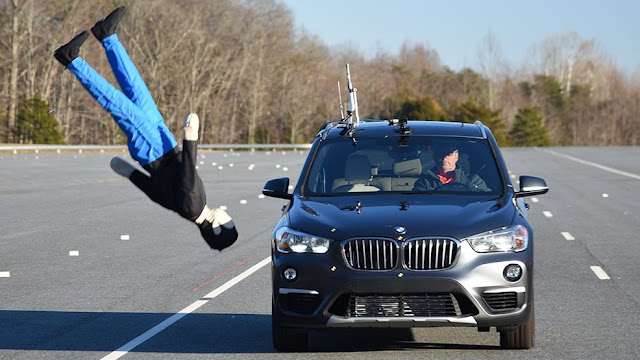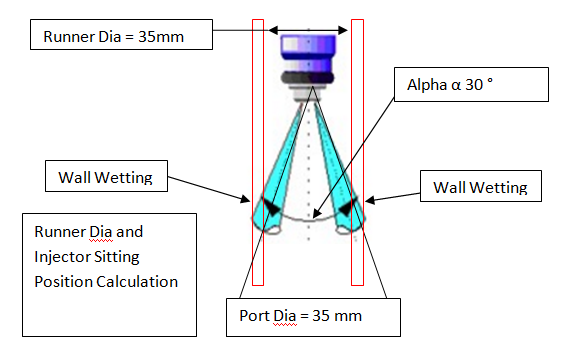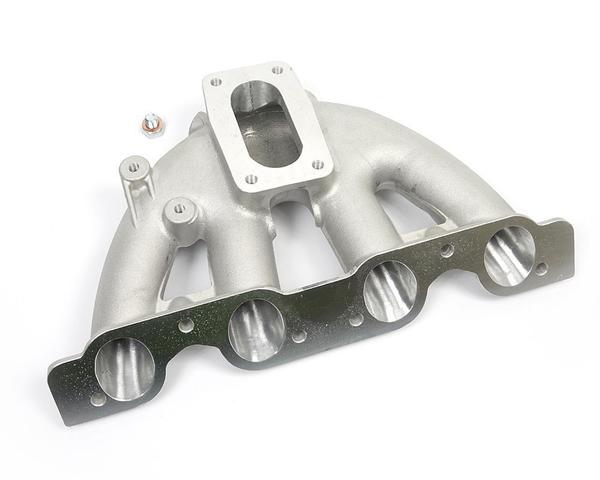Brake Design Calculation for Sports Car and Racing Vehicles
Fundamental Assumptions for Steering and
Brake:
·
Lateral and normal forces will be distributed equally on all wheels.
- No lateral forces
- No wheel compliance
- No Body roll
- Only front wheels contribute to steering
- No suspension effects
- No longitudinal weight transfers
- Constant speed
- No Air drag
- Road has constant friction coefficient (Dry 0.8, Wet 0.3)
Vehicle Level Input Parameters:
Minimum (Car + Driver) Mass M =
545 Kg
Height of Centre of Gravity HCOG=
350 mm
Wheel Base Length WBL= 2700 mm
Front Centre to COG lm = 1900mm
Driver Weight = 75 Kg
Other Assumption:
Pedal Lever and Master Cylinder
Efficiency=0.8
Bias Ratio = 0.8
Front/rear pad-disc brake factor
= 0.76
Front and rear caliper cylinder
efficiency = 0.98
D1, D2, D3, D4, D5 and V1 are iterations done by changing brake system component parameter value- brake diagram is made in next blog for each of these design iterations. In V1 iteration vehciel parameter were changed to check that basic vehciel design is OK or NG from the brake designer point of view.
Brake Design Iterations
|
D1
|
D2
|
D3
|
D4
|
D5
|
1V*
|
Design Review
|
Pedal Level Ratio
|
5
|
4
|
5
|
5
|
5
|
5
|
If Master Cylinder
dia is increased, driver needs to apply more force to stop vehicle.
|
Master Cylinder
Diameter mm
|
10
|
20
|
10
|
10
|
10
|
10
|
|
Front/rear caliper
piston diameter mm
|
45
|
40
|
45
|
45
|
45
|
45
|
|
Mean effective
radius of front braking disc mm
|
230
|
230
|
220
|
200
|
250
|
230
|
For bigger Disc,
Driver needs to apply lesser force.
|
Mean effective
radius of rear braking disc mm
|
220
|
220
|
220
|
200
|
250
|
220
|
|
Vehicle Parameters
|
|||||||
Height of Centre of
Gravity mm
|
350
|
350
|
350
|
350
|
350
|
300
|
*Vehicle COG, Wheel
Base and Front Axle Location is changed for study.
|
Wheel Base Length
mm
|
2700
|
2700
|
2700
|
2700
|
2700
|
2800
|
|
Front Axle to
Centre of Gravity Distance mm
|
1900
|
1900
|
1900
|
1900
|
1900
|
2100
|
|
Driver effort to
generate Actual Braking Force equivalent to vehicle weight (N)
|
|||||||
To generate
Normalized Actual Front Braking force equal to 1g
|
60
|
375
|
60
|
70
|
53
|
50
|
D5: At 1g driver
need to apply only 53N to stop front wheel and 70N to stop rear wheel.
|
To generate Normalized
Actual Rear Braking force equal to 1g
|
75
|
325
|
75
|
90
|
70
|
75
|
|
Performance of
Vehicle ( Different Driving Condition)
|
|||||||
Maximum wheel
unlocked deceleration ( Stable Design up to)
|
1 g
|
1 g
|
1.2 g
|
1.3 g
|
1.2 g
|
1.5g
|
Design 4 is most
stable up to 1.3g line.
|
Optimal Front Force
0 at this deceleration (g) (X Intersection)
|
-2.28
|
-2.28
|
-2.28
|
-2.28
|
-2.28
|
-2.33
|
For further Improvement COG must be lowered, Wheel base need to be increased and COG shifted to rear wheel. |
Optimal Rear Force
0 at this deceleration (g) (Y
Intersection)
|
5.42
|
5.42
|
5.42
|
5.42
|
5.42
|
7
|
|
Max deceleration during rear circuit failure with µ 0.8
Dry
|
0.25
|
0.25
|
0.25
|
0.27
|
0.27
|
0.2
|
|
Max deceleration
before front wheel lock with µ
0.3 Wet
|
0.2
|
0.2
|
0.2
|
0.2
|
0.2
|
0.18
|
|
Design 5 will be used in vehicle because driver effort is least and
vehicle is stable up to 1.2g line. As bias ratio is 0.8, rear brake will lock
at higher force (70N) than required at front wheel lock (53N). If in physical
test rear brake is locking then rear brake disc size will be reduced from
250mm.
Brake Pipe Design:
Steel
|
Cu Alloy
|
Cu-Ni-Si Alloy
|
Remark
|
|
Lower Yield Strength
N/mm2
|
250
|
410
|
600
|
Though driver never apply
full weight (75Kg) on brake. However system must be designed for worst case.
|
Pipe Thickness mm
|
3
|
3
|
3
|
|
OD mm
|
10
|
10
|
10
|
|
Burst Pressure in N/mm2
|
150
|
246
|
360
|
|
Burst Pressure in Bar
|
1500
|
2460
|
3600
|
|
#Pressure Generated by Driver Bar
|
212
|
212
|
212
|
|
Factor of safety
|
7
|
11.6
|
16.9
|
Burst Pressure = 2 * Material
Strength * Pipe Wall Thickness / Pipe OD
#Conclusion:
Refer Design 5; A 75 Kg Drive (at
750N applied pedal force) can create up to 212 bar pressure in pipe with 10 mm Calipers
piston, 45mm Master cylinder piston and Pedal Ratio 5.
Total Mass Kg
|
Total Weight N
|
#Height COG
|
#Wheel Base mm
|
#Front Axle to COG
|
load on Rear Axle N
|
X
|
ψ
|
M
|
W (N)
|
HCOG
|
L (mm)
|
Lm mm
|
Frear
|
CG/WB
|
Frear/ W
|
545.0000
|
5346.45
|
350.00
|
2700.000
|
1900.0
|
3762.3
|
0.12963
|
0.70370
|
Rear calliper pushout pressure
|
Front/rear pad-disc brake factor
|
**Pedal lever ratio
|
Lever/master
cylinder effici
|
Bias ratio
|
Master cylinder bore diameter
|
Master cylinder Area m2
|
**Front/rear calliper piston diameter
mm
|
Por
|
Bff
|
Lp
|
np
|
Br
|
Dmm
|
Amc
|
Dcalpis mm
|
0.00000
|
0.76000
|
5.00000
|
0.80000
|
0.80000
|
10.00000
|
0.00008
|
45.00000
|
No of pistons in each front calliper
|
No of front callipers used
|
Front rear calliper cylinder effici
|
Mean eff radius of front disc
|
Radius of the front tyre m
|
**Front/rear calliper piston diameter
m
|
Front calliper pushout pressure
|
Mean effective radius of rear braking disc m
|
nf
|
Nf
|
ncf
|
rf
|
Rf
|
Dcf
|
Pof
|
rr
|
2.00
|
2.00
|
0.98
|
0.25000
|
0.33
|
0.045
|
0.00
|
0.25
|
deceleration (g)
|
OPT F(N)
|
OPT R(N)
|
**Caliper Piston Area
|
0.00159
|
|||
-3.30000
|
0.43389
|
-3.73389
|
Aplied pedal force (N)
|
ACTUAL F
|
ACTUAL R
|
Pl F
|
Plr
|
-3.00000
|
0.27778
|
-3.27778
|
0.00000
|
0.00000
|
0.00000
|
0.00000
|
0.00000
|
-2.70000
|
0.14500
|
-2.84500
|
25.00000
|
0.47491
|
0.37993
|
707714.08351
|
566171.26681
|
-2.28570
|
0.00000
|
-2.28570
|
53.00000
|
1.00681
|
0.80545
|
1500353.85704
|
1200283.08563
|
-2.00000
|
-0.07407
|
-1.92593
|
70.00000
|
1.32975
|
1.06380
|
1981599.43383
|
1585279.54706
|
-1.80000
|
-0.11333
|
-1.68667
|
100.00000
|
1.89965
|
1.51972
|
2830856.33404
|
2264685.06723
|
-1.50000
|
-0.15278
|
-1.34722
|
125.00000
|
2.37456
|
1.89965
|
3538570.41755
|
2830856.33404
|
-1.20000
|
-0.16889
|
-1.03111
|
150.00000
|
2.84947
|
2.27958
|
4246284.50106
|
3397027.60085
|
-0.90000
|
-0.16167
|
-0.73833
|
175.00000
|
3.32438
|
2.65950
|
4953998.58457
|
3963198.86766
|
-0.60000
|
-0.13111
|
-0.46889
|
200.00000
|
3.79929
|
3.03943
|
5661712.66808
|
4529370.13447
|
-0.30000
|
-0.07722
|
-0.22278
|
225.00000
|
4.27420
|
3.41936
|
6369426.75159
|
5095541.40127
|
0.00000
|
0.00000
|
0.00000
|
250.00000
|
4.74912
|
3.79929
|
7077140.83510
|
5661712.66808
|
0.30000
|
0.10056
|
0.19944
|
275.00000
|
5.22403
|
4.17922
|
7784854.91861
|
6227883.93489
|
0.60000
|
0.22444
|
0.37556
|
300.00000
|
5.69894
|
4.55915
|
8492569.00212
|
6794055.20170
|
0.90000
|
0.37167
|
0.52833
|
325.00000
|
6.17385
|
4.93908
|
9200283.08563
|
7360226.46851
|
1.20000
|
0.54222
|
0.65778
|
350.00000
|
6.64876
|
5.31901
|
9907997.16914
|
7926397.73531
|
1.50000
|
0.73611
|
0.76389
|
375.00000
|
7.12367
|
5.69894
|
10615711.25265
|
8492569.00212
|
1.80000
|
0.95333
|
0.84667
|
400.00000
|
7.59858
|
6.07887
|
11323425.33616
|
9058740.26893
|
2.10000
|
1.19389
|
0.90611
|
425.00000
|
8.07350
|
6.45880
|
12031139.41967
|
9624911.53574
|
2.40000
|
1.45778
|
0.94222
|
450.00000
|
8.54841
|
6.83873
|
12738853.50318
|
10191082.80255
|
2.70000
|
1.74500
|
0.95500
|
475.00000
|
9.02332
|
7.21866
|
13446567.58670
|
10757254.06936
|
3.00000
|
2.05556
|
0.94444
|
500.00000
|
9.49823
|
7.59858
|
14154281.67021
|
11323425.33616
|
3.30000
|
2.38944
|
0.91056
|
525.00000
|
9.97314
|
7.97851
|
14861995.75372
|
11889596.60297
|
3.60000
|
2.74667
|
0.85333
|
550.00000
|
10.44805
|
8.35844
|
15569709.83723
|
12455767.86978
|
3.90000
|
3.12722
|
0.77278
|
575.00000
|
10.92297
|
8.73837
|
16277423.92074
|
13021939.13659
|
4.20000
|
3.53111
|
0.66889
|
600.00000
|
11.39788
|
9.11830
|
16985138.00425
|
13588110.40340
|
4.44444
|
3.87745
|
0.56699
|
625.00000
|
11.87279
|
9.49823
|
17692852.08776
|
14154281.67021
|
4.80000
|
4.40889
|
0.39111
|
650.00000
|
12.34770
|
9.87816
|
18400566.17127
|
14720452.93701
|
5.10000
|
4.88278
|
0.21722
|
675.00000
|
12.82261
|
10.25809
|
19108280.25478
|
15286624.20382
|
5.42857
|
5.42857
|
0.00000
|
700.00000
|
13.29752
|
10.63802
|
19815994.33829
|
15852795.47063
|
5.70000
|
5.90056
|
-0.20056
|
725.00000
|
13.77244
|
11.01795
|
20523708.42180
|
16418966.73744
|
6.00000
|
6.44444
|
-0.44444
|
750.00000
|
14.24735
|
11.39788
|
21231422.50531
|
16985138.00425
|
Please go to next blog to understand above brake design graph. Each and every parameter is plotted on brake design diagram for different iteration and best is selected. please go next blog for final brake design.







